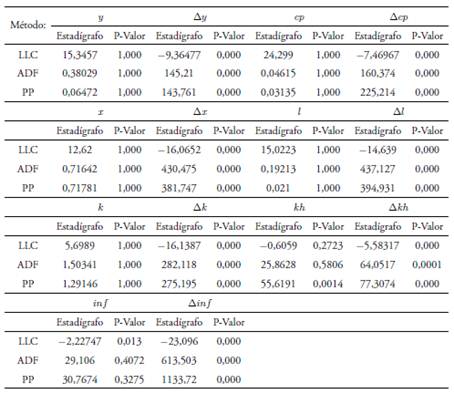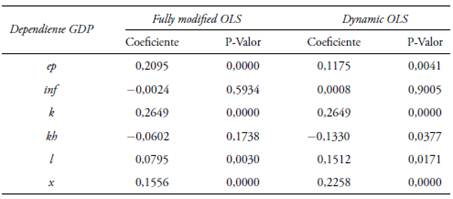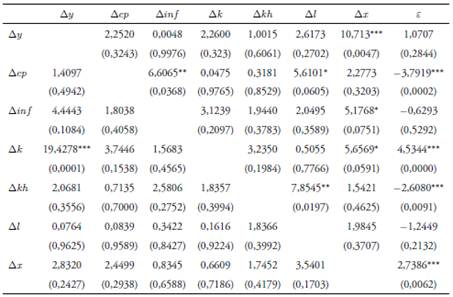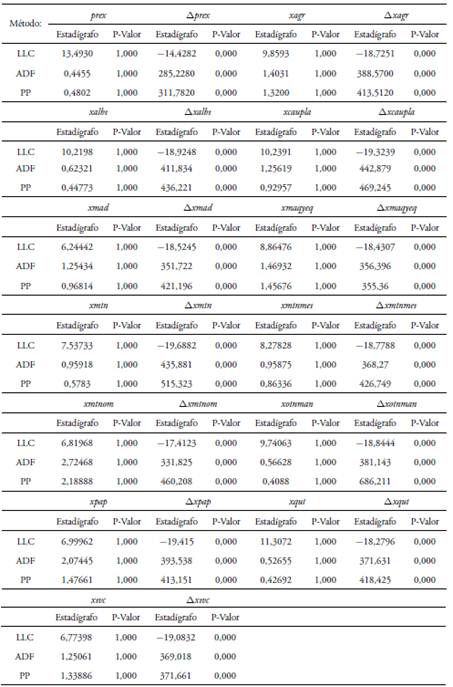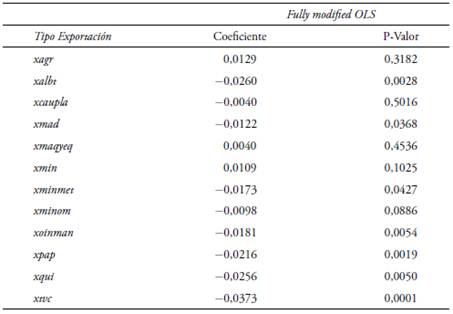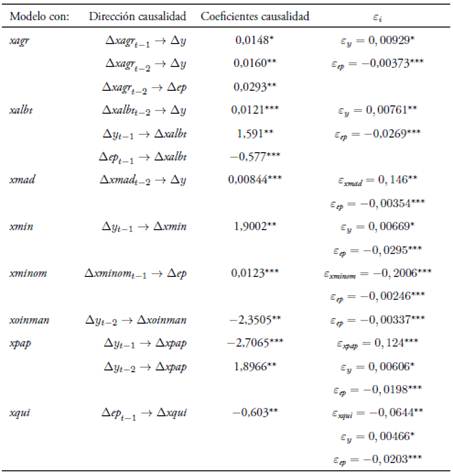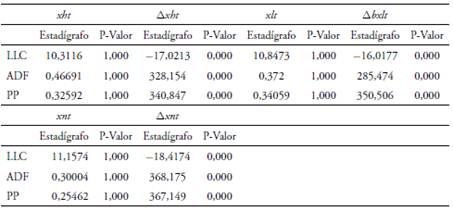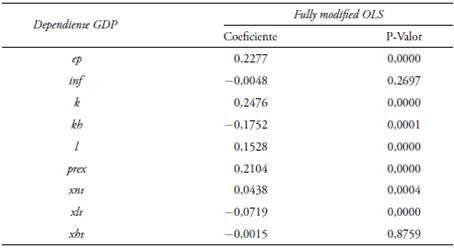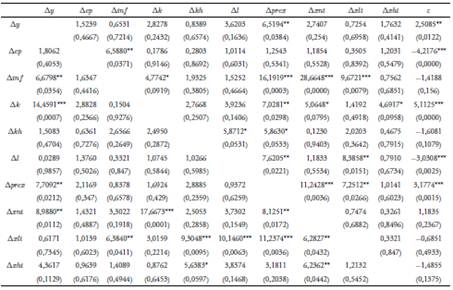Granger causality between exports, economic growth and electricity production: empirical evidence for Latin America
DOI:
https://doi.org/10.17533/udea.le.n86a02Keywords:
economic growth, export composition, electricity production, panel data cointegration, Latin America.Abstract
This paper examines the causal short-run and long-run relationship between economic growth, export composition and electricity production using panel cointegration techniques for 14 Latin American countries in the period 1971-2010. The analysis is peformed considering first aggregate exports, and then breaking down into 12 industrial sectors to finally take account of the intensive use of technology. The results indicate that long-term economic growth depends on non-technology exports and that policies adversely affecting electricity production do not impact GDP in the short term, but they do in the long run.
Downloads
References
Alonso, Julio César & Rincón Montes, Esperanza (2005). “Sostenibilidad de la Cuenta Corriente del Valle del Cauca: una aproximación desde la econometría”, Revista de Economía y Administración, Julio, pp. 201-216.
Alonso, Julio César & Patiño, Carlos (2007) “Crecer para exportar o exportar para crecer? El caso del valle del Cauca”, Ensayos sobre Economía Regional, No. 46. Banco de la República, Colombia.
Apergis, Nicholas & Payne, James E. (2010). “Energy consumption and growth in South America: Evidence from a panel error correction model”, Energy Economics, Vol. 32, No. 6, pp. 1421-1426.
Awokuse, Titus (2008). “Trade openness and economic growth: is growth export-led or import-led?”, Applied Economics, Vol. 40, No. 2, pp. 161-173.
Bahmani-Oskooee, Mohsen; Mohtadi, Hamid & Shabsigh, Ghiath (1991). “Exports, growth and causality in LDCs: A re-examination”, Journal of Development Economics, Vol. 36, No. 2, pp. 405-415.
Balassa, Bela (1978). “Exports and economic growth: further evidence”, Journal of Development Economics, Vol. 5, No. 2, pp. 181-189.
Balaguer, Jacint & Cantavella-Jordá, Manuel (2004). “Export Composition and Spanish Economic Growth: Evidence from the 20th Century”, Journal of Policy Modeling, Vol. 26, No. 2, pp. 165-179.
Banco Mundial (2013). Exportaciones de productos de alta tecnología. Recuperado de: datos.bancomundial.org/indicador/TX.VAL.TECH.MF.ZS (septiembre 25 de 2015).
Banerjee, Anindya (1999). “Panel data unit roots and cointegration: an overview”, Oxford Bulletin of economics and Statistics, Vol. 61, No. S1, pp. 607-629.
Barro, Robert & Lee, Jong Wha (2013). “A new data set of educational attainment in the world, 1950–2010”, Journal of Development Economics, No. 104, pp. 184-198.
Cepal (2015). Banco de Datos estadísticos de Comercio Exterior. Recuperado de: http://interwp.cepal.org/badecel/basededatos.asp (marzo 11 de 2015).
Cheng, Benjamin (1997). “Energy consumption and economic growth in Brazil, Mexico and Venezuela: a time series analysis”, Applied Economics Letters, Vol. 4, No. 11, pp. 671-674.
Chontanawat, Jaruwan; Hunt, Lester & Pierse, Richard (2008). “Does energy consumption cause economic growth?: Evidence from a systematic study of over 100 countries”, Journal of Policy Modeling, Vol. 30, No. 2, pp. 209-220.
Cole, Matthiew A. (2006). “Does trade liberalization increase national energy use?”, Economics Letters, Vol. 92, No. 1, pp. 108-112.
Crespo-Cuaresma, Jesús & Wörz, Julia (2005). “On Export Composition and Growth”, Review of World Economics, Vol. 141, No. 1, pp. 33-49.
Dickey, David & Fuller, Wayne (1979). “Distribution of the estimators for autoregressive time series with a unit root”, Journal of the American Statistical Association, Vol.74, No. 366a, pp. 427-431.
Edwards, Sebastian (1998). “Openness, productivity and growth: what do we really know?”, The Economic Journal, Vo. 108, No. 447, pp. 383-398.
Engle, Robert F. & Granger, Clive W.J. (1987). “Co-integration and error correction: representation, estimation, and testing”, Econometrica: Journal of the Econometric Society, Vol. 55, No. 2, pp. 251–276.
Feder, Gershon (1983). “On exports and economic growth”, Journal of Development Economics, Vol. 12, No. 1, pp. 59-73.
Fosu, Augustin Kwasi (1990). “Export composition and the impact of exports on economic growth of developing economies”, Economics Letters, Vol. 34, No. 1, pp. 67-71.
Ghani, Gairuzazmi M. (2012). “Does trade liberalization effect energy consumption?”, Energy Policy, Vol. 43, pp. 285-290.
Ghatak, Subrata; Milner, Chris & Utkulu, Utku (1997). “Exports, Export Composition and Growth: Cointegration and Causality Evidence for Malaysia”, Applied Economics, Vol. 29, No. 2, pp. 213-223.
Giles, Judith & Williams, Cara (2000a). “Export-led growth: a survey of the empirical literature and some non-causality results. Part 1”, Journal of International Trade & Economic Development, Vol. 9, No. 3, pp. 261-337.
Giles, Judith & Williams, Cara (2000b). “Export-led growth: a survey of the empirical literature and some non-causality results. Part 2”, Journal of International Trade & Economic Development, Vol. 9, No. 4, pp. 445-470.
Granger, Clive W.J. (1969). “Investigating causal relations by econometric models and cross-spectra methods”, Econometrica: Journal of the Econometric Society, Vol. 37, No. 3, pp. 424-438.
Greenaway, David; Morgan, Wyn & Wright, Peter (1999). “Exports, Export Composition and Growth”, The Journal of International Trade and Economic Development, Vol. 8, No. 1, pp. 41-51.
Gujarati, Damodar (2004). Econometría (4a Ed.). Mexico D.F: Mc Graw-Hill.
Hossain, Sharif (2012). “Multivariate Granger causality between economic growth, electricity consumption, exports and remittance for the panel of three SAARC countries”, European Scientific Journal, Vol. 8, No. 1.
Huang, Bwo-Nung; Hwang, Ming Jeng & Yang, Chin Wei (2008). “Causal relationship between energy consumption and GDP growth revisited: a dynamic panel data approach”, Ecological Economics, Vol. 67, No. 1, pp. 41-54.
Ibrahim, Izani & Mac Phee, Craig (2003). “Export Externalities and Economic Growth”, The Journal of International Trade and Economic Development, Vol. 12, No. 3, pp. 257-283.
Kao, Chihwa (1999). “Spurious regression and residual-based tests for cointegration in panel data”, Journal of Econometrics, Vol. 90, No. 1, pp. 1-44.
Kouzmine, Valentine (2001). “América Látina: Las exportaciones de productos básicos en los a nos noventa”, Serie Comercio internacional, No. 14. CEPAL, Naciones Unidas.
Kraft, John & Kraft, Arthur (1978). “Relationship between energy and GNP”, Journal of Energy and Devolpment (United States), Vol. 3, No. 2.
Lean, Hooi Hooi & Smyth, Rusell (2010). “On the dynamics of aggregate output, electricity consumption and exports in Malaysia: evidence from multivariate Granger causality tests”, Applied Energy, Vol. 87, No. 6, pp. 1963-1971.
Lee, Chien-Chiang (2005). “Energy consumption and GDP in developing countries: a cointegrated panel analysis”, Energy Economics, Vol. 27, No. 3, pp. 415-427.
Levin, Andrew; Lin, Chien-Fu & Chu, Chia Shang James (2002). “Unit root tests in panel data: asymptotic and finite-sample properties”, Journal of Econometrics, Vol. 108, No. 1, pp. 1-24.
Lewer, Joshua & Van Den Berg, Hendrik (2003). “How large is international trade’s effect on economic growth?”, Journal of Economic Surveys, Vol. 17, No. 3, pp. 363-396.
Mahadevan, Renuka & Asafu-Adjaye, John (2007). “Energy consumption, economic growth and prices: A reassessment using panel VECM for developed and developing countries”, Energy Policy, Vol. 35, No. 4, pp. 2481-2490.
Mehrara, Mohsen (2007). “Energy consumption and economic growth: the
case of oil exporting countries”, Energy Policy, Vol. 35, No. 5, pp. 2939-2945.
Murry, Donald & Gehuang, D. Nan (1996). “A definition of the gross domestic product-electrification interrelationship”, Fuel and Energy Abstracts, Vol. 37, No. 2, pp. 112-112.
Nachane, Dilp M.; Nadkarni, Ramesh M. & Karnik, Ajith V. (1988). “Cointegration and causality testing of the energy–GDP relationship: a crosscountry study”, Applied Economics, Vol. 20, No. 11, pp. 1511-1531.
Nasreen, Samia & Anwar, Sofía (2014). “Causal relationship between trade
openness, economic growth and energy consumption: A panel data analysis of Asian countries”, Energy Policy, Vol. 69, pp. 82-91.
Narayan, Paresh Kumar & Smyth, Russell (2009). “Multivariate Granger causality between electricity consumption, exports and GDP: evidence from a panel of Middle Eastern countries”, Energy Policy, Vol. 37, No. 1, pp. 229-236.
Olson, Josephine E. (2014). “Economic Growth in Latin American Countries: Is It Based on Export-Led or Import-Led Growth?”, Emerging Markets Finance and Trade, Vol. 50, Sup1, pp. 6-20.
Ozturk, Ilhan (2010). “A literature survey on energy–growth nexus”, Energy
Policy, Vol. 38, No. 1, pp. 340-349.
Payne, James (2010a). “Survey of the international evidence on the causal relationship between energy consumption and growth”, Journal of Economic Studies, Vol. 37, No. 1, pp. 53-95.
Payne, James (2010b). “A survey of the electricity consumption-growth literature”, Applied Energy, Vol. 87, No. 3, pp. 723-731.
Pedroni, Peter (2000). “Fully modified OLS for heterogeneous cointegrated panels”. In: Baltagi, B.H.; Fomby, T.B. & Hill, R.C. (Eds.), Advances in Econometrics, Vol 15: Nonstationary Panels, Panel Cointegration and Dynamic Panels (pp. 93-130). Amsterdam: JAI Press, Elsevier Sciences.
Pedroni, Peter (2001). “Purchasing power parity tests in cointegrated panels”, Review of Economics and Statistics, Vol. 83, No. 4, pp. 727-731.
Pesaran, M. Hashem; Yongcheol, Shin & Smith, Ron P. (1999). “Pooled mean group estimation of dynamic heterogeneous panels”, Journal of the American Statistical Association, Vol. 94, No. 446, pp. 621-634.
Phillips, Peter CB. & Perron, Pierre (1988). “Testing for a unit root in time series regression”, Biometrika, Vol. 75, No. 2, pp. 335-346.
Reyes, Silvia & Jiménez, Sergio (2012). “Composición de las exportaciones y crecimiento económico en la Comunidad Andina de Naciones”, Lecturas de Economía, No. 77, pp. 53-90.
Riezman, Raymond; Summers, Peter & Whiteman, Charles (1996). “The engine of growth or its handmaiden?: a time series assessment of exportled growth”, Empirical Economics, Vol. 93, No. 4, pp. 77-113.
Sadorsky, Perry (2011). “Trade and energy consumption in the Middle East”, Energy Economics, Vol. 33, No. 5, pp. 739-749.
Sadorsky, Perry (2012). “Energy consumption, output and trade in South America”, Energy Economics, Vol. 34, No. 2, pp. 476-488.
Soytas, Ugur & Sari, Ramazan (2003). “Energy consumption and GDP: causality relationship in G-7 countries and emerging markets”, Energy Economics, Vol. 25, No. 1, pp. 33-37.
Squalli, Jay (2007). “Electricity consumption and economic growth: bounds and causality analyses of OPEC members”, Energy Economics, Vol. 29, No. 6, pp. 1192-1205.
Uk polo, Víctor (1994). “Export Composition and Growth of Selected Low-Income African Countries: evidence from time series data”, Applied Economics, Vol. 26, No. 5, pp. 445-449.
Van den Berg, Hendrik & Schmidt, James (1994). “Foreign trade and economic growth: time series evidence from Latin America”, Journal of International Trade & Economic Development, Vol. 3, No. 3, pp. 249-268.
Xu, Zhenhui (1996). “On the causality between export growth and GDP growth: an empirical reinvestigation”, Review of International Economics, Vol. 4, No. 2, pp. 172-184.
Downloads
Published
How to Cite
Issue
Section
License
Copyright (c) 2017 Javier Alejandro Vera Vargas, Werner Kristjanpoller Rodríguez

This work is licensed under a Creative Commons Attribution-NonCommercial-ShareAlike 4.0 International License.
This page, by Universidad de Antioquia, is licensed under a Creative Commons Attribution License.
Authors who publish with this journal agree to retain copyright and grant the journal right of first publication, with the article licensed under a Creative Commons Attribution-NonCommercial-ShareAlike License allowing others to share it as long as they acknowledge its authorship and original publication in this journal.
Authors can enter into separate, additional contractual arrangements for the non-exclusive distribution of the journal's published version of the work (e.g., post it to an institutional repository or publish it in a book), provided that these arrangements be not for profit and the journal be acknowledged as the original source of publication.
Authors are permitted and encouraged to post their papers online (e.g., in institutional repositories or on their websites), as it can lead to valuable exchanges as well as greater citation of the published work.







 (
( (
( (
(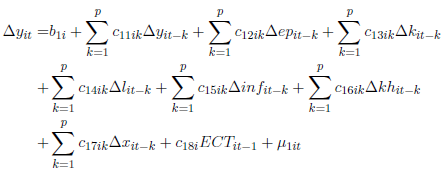 (
(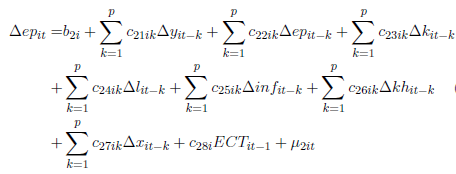 (
(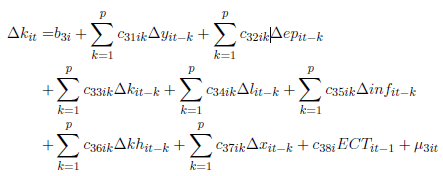 (
(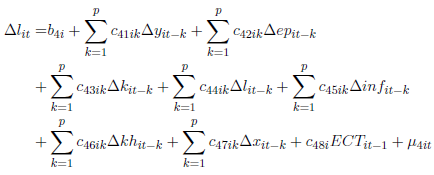 (
(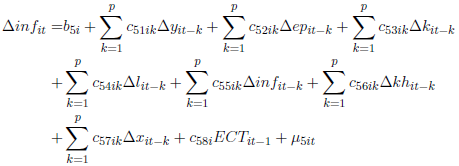 (
(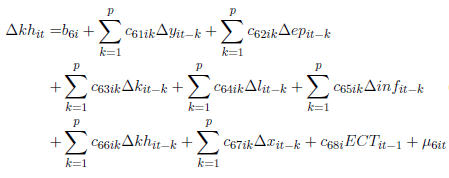 (
(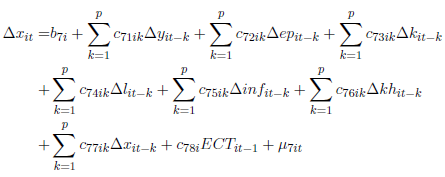 (
(